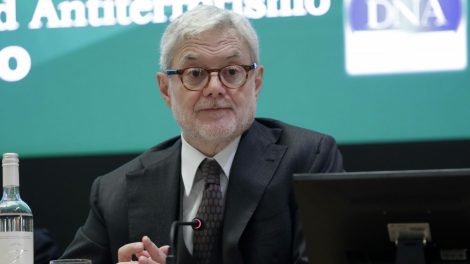What happened. Recently, in Bari, the police arrested a 23-year-old neo-Nazi. The Italian citizen was reportedly under investigation for recruitment (for the purposes of international terrorism) as well as propaganda and incitement to commit racial, ethnic and religious discrimination.
- Upon entering his flat, law enforcers found firearms, crossbows and iron clubs, gadgets marked with swastikas and runes, and Hitler-praising posters.
- His personal computer was rife with similar content, along with traces of anti-Semitic messages and white supremacist posts – symptoms of belonging to a wider network.
The digital link. Investigators had been monitoring the suspect for over a year across extremist online environments. They traced his allegiance back to “The Base” – a North America-born, loose, digitally savvy supremacist organisation classified by Washington as a terrorist threat.
- The Italian suspect was reportedly the head of a small local cell of three to four individuals. He engaged in proselytism: online, he translated foreign content (mostly English-language memes) and spread them over the Italian internet, while offline, he plastered posters across the city.
- According to the police, “he was ready for extreme sacrifice and unspecified violent actions.”
A wider movement. The judge in charge of the case highlighted “alarming connections with the Buffalo attack,” a domestic terrorism incident involving an 18-year-old American citizen killing ten people while live-streaming. That attack recently inspired a 19-year-old neo-Nazi who killed two people outside a queer bar in Bratislava in October.
- The Buffalo killer, in turn, followed in the footsteps of the author of the 2019 Christchurch (New Zealand) massacre – which was featured in the Italian suspect’s personal pantheon, along with Anders Breivik – the Norwegian terrorist, guilty of 77 murders in 2011 – and Luca Traini, who in 2018 opened fire on six people of African descent.
- All their names were inscribed on a weapons box in the Italian suspect’s house.
The expert’s analysis. Arije Antinori – professor of Criminology and Sociology of Deviance at the Sapienza University of Rome and member of the European Observatory on Online Hate – the episode is part of a broader phenomenon: the spread of narratives from North America to Europe, especially France, Germany and Italy.
- Digital citizens “import” such toxic and divisive ideas, often packaged in videos and memes to favour maximum dissemination in other languages. This content “can transform ideologies and violent pseudo-ideologies into a culture of terrorism and violent extremism.”
From memes, to conspiracies, to extremism. “An important element of white supremacism is the central connection between disinformation and radicalisation. The great ethnic replacement and other narratives are strongly conspiratorial,” added the expert. “Meanwhile, cultural transformation accelerates the drive towards identitarian self-presentation, both individualistic and collective.”
- Seeds of hatred and connective imagery, personal experience and social compression may all concur in radicalising a vulnerable subject, not unlike what happened with the digital jihadism of Daesh (ISIS), noted Professor Antinori.
- “We must go beyond propaganda and understand how effective ideological and cyber-social propulsion is, especially at the individual level. Hence the unstructured and solitary phenomena, the action of the so-called lone wolves.”
How to go about it. The expert believes communities should urgently establish practices to prevent and counter these extremist ideologies, across generations, starting at the education level. “We cannot create antibodies against radicalisation and violent extremism without fostering the growth of digital European citizens, properly aware and prepared.”
- Also, he added, monitoring is needed. ISIS’ digital propaganda enjoyed a period of extremely high diffusion through the most popular social networks, which are now much more adept at moderating extremist content. But soon, with the decentralisation of platforms, increasingly connected individuals and the atomisation of society, these phenomena will have more oxygen to grow.
Image: Italian State Police





